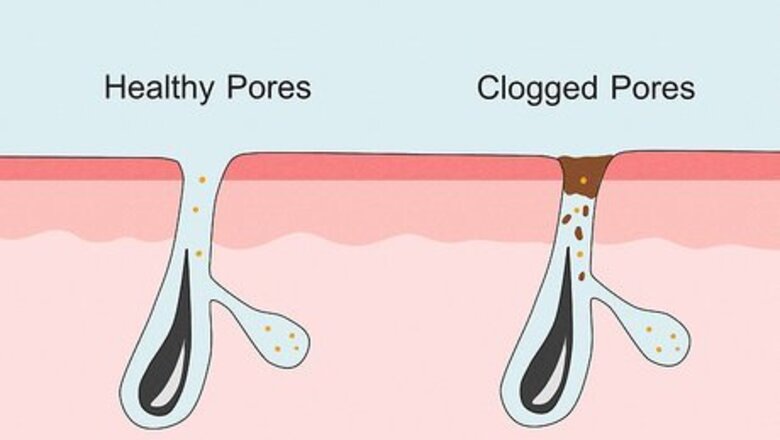
views
Understand what causes clogged pores.
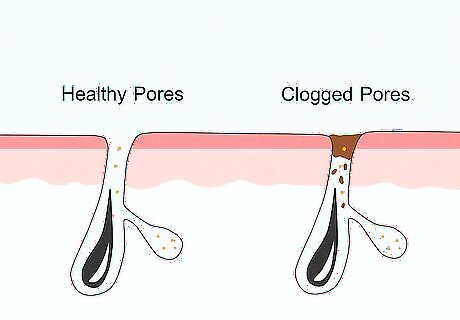
Pores are tiny holes surrounding hair follicles on your face. When these small openings fill up with dirt, dead skin cells, oil, makeup, pollutants, bacteria, and more, they can clog over time (sometimes noticeably—those are blackheads). Clogged pores can also cause breakouts and whiteheads. Depending on the person, your skin and pores may function totally differently (you may be more prone to oily or dry skin, for example). If one technique doesn't work, try another. Keep experimenting until you find an unclogging and cleaning method that works for you.
Scrub with AHA + BHA Exfoliants.
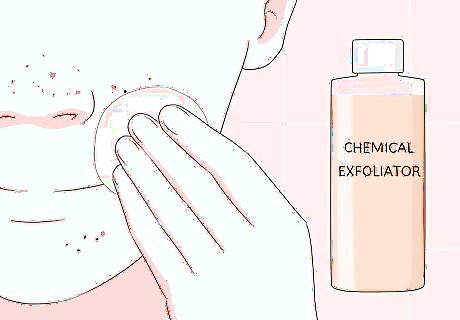
In exfoliants, look for ingredients proven to chemically unclog pores. Chemical cleaning is especially effective for pores because it's more difficult to get deep into pores via physical cleaning alone. Look out for ingredients like glycolic, lactic, and salicylic acid—because in your fight to unclog pores, these will be one of the best options. First, get your face wet with warm water. Then, gently apply your exfoliant. Rub your fingers around your face in a circular motion. Never use AHA or BHA exfoliants more than 2-3 times per week. Test out just a pinch of exfoliant to start. Wait to see how your skin reacts. These are strong chemical agents. If you use too much too quickly, you could easily dry out your skin. BHAs are typically harsher and sometimes need a prescription. If you're interested in trying out a heavier exfoliant, talk to your doctor first.
Use pore strips.
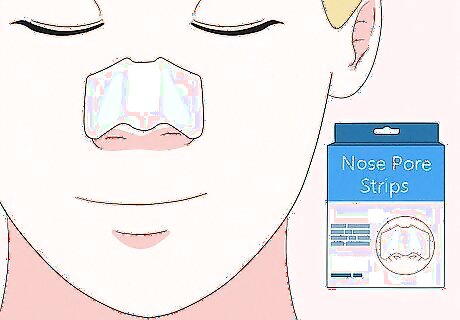
Pore strips easily clear your pores and help them appear smaller. Pick out a shape and size that suits the section of your face you’re looking to clear up—maybe your nose, forehead, chin, or cheeks. Wet the strip and your face with warm water, apply the strip so it’s firmly pressed into your facial creases, and leave the strip on for 10-15 minutes. Then, gently peel the strip away. Oil, dead skin, and hair can all be removed from your skin using a pore strip. This reduces buildup over time. They can also immediately leave your pores looking cleaner and smaller. Plus, they’re just really fun to use, too!
Apply retinol or retinoids.
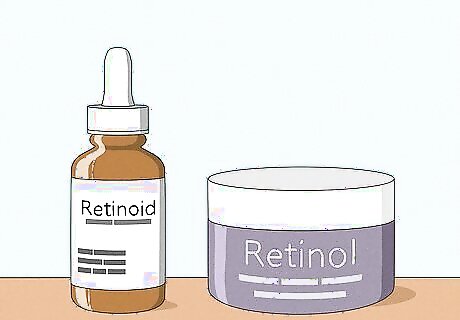
Retinol and retinoids decrease oil and dead cells on your skin’s surface. In short, they're great for unclogging and minimizing pores. Head to your local drugstore and find a cream or oil that contains retinol. Or, reach out to your doctor to get a prescription for a stronger retinoid product. These can cause skin to produce more collagen, look fresher, and ultimately, stay clear for longer. Though there are tons of benefits, retinol and retinoids pose a risk, too. If you have sensitive skin, talk to your doctor or begin at the lowest percentage. Wear sunscreen and never overuse your retinol or retinoid products. This can lead to extra uncomfortable, sensitive, or dry skin. It’s also important to note that these products aren’t safe for someone pregnant or breastfeeding. Speak to your doctor for more information.
Wear clay or charcoal masks.
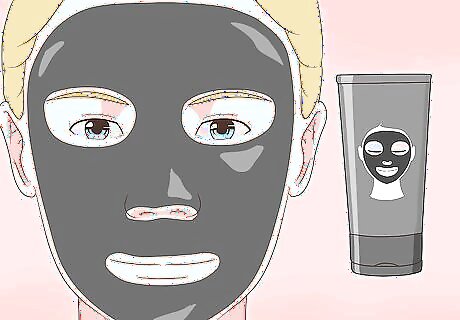
When they dry, charcoal and clay masks soak up oil and debris. So masks will collect your pores' impurities—and when you toss your mask, dirt and grime get tossed out with it. Follow your mask’s directions so you don’t cross the line from reducing oil to totally drying out your skin. Finally, if you use a peel mask, remove it very carefully. Otherwise, you risk damaging your skin. Make sure you wash your face with your regular cleanser prior to applying your mask. Follow up with a hydrating moisturizer to help fight off dry skin. Find clay or charcoal masks online, in beauty stores, or at your local drugstore.
Exfoliate with baking soda.
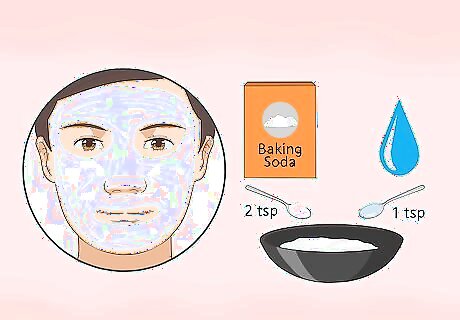
Try an at-home remedy that could clear dead skin and balance your pH. Mix 2 teaspoons (9.9 mL) of baking soda and 1 teaspoon (4.9 mL) of warm water to create your makeshift cleanser. Gently rub your mixture over your face and be very careful to avoid your eyes (because, ouch! That'll hurt). Use this method no more than once or twice per week. Note that this remedy can neutralize your face’s pH balance—but it could also dry out sensitive skin. Use caution and consider getting advice from your specialist first. If you notice that it creates dryness or irritation, don't continue using this method.
Incorporate steamers.
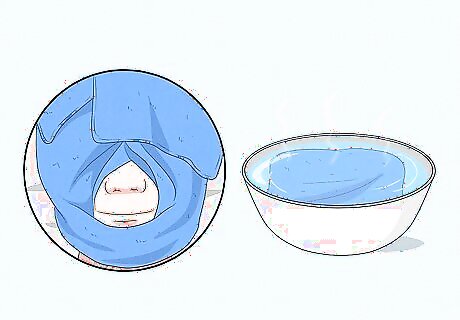
Facial steaming helps make your pore exfoliations more effective. Order a steamer online, in drug stores, or in beauty stores. Or, use a towel and a bowl for a DIY steamer. Place a clean, small towel in a bowl, pour hot water over the towel, and then lay the towel over your face. Make sure the water isn't boiling, otherwise you could burn yourself. Steams help gently open up your pores using warm air. Then, when you follow up with an AHA or BHA exfoliation or cleanse. When you clean out your pores, now it'll be especially effective—because your steamer lets exfoliations get deeper into your pores! Keep in mind that people with rosacea or sensitive skin shouldn't try steaming. This can cause more redness and exacerbate your skin condition.
Try pore cleansers.
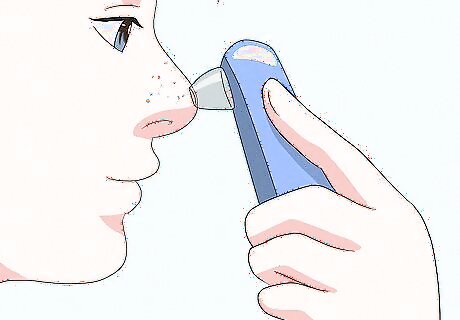
Use a pore cleanser to physically suck the dirt from your pores. Also called pore vacuums, pore cleansers use suction to pull dirt and debris from your pores. After a single use, you may immediately notice fewer blackheads. Buy a pore cleanser online or in the drugstore. They won’t hurt to use—but pay attention to the directions. Your biggest risk is inadvertently leaving a mark on your skin!
Schedule a professional facial.
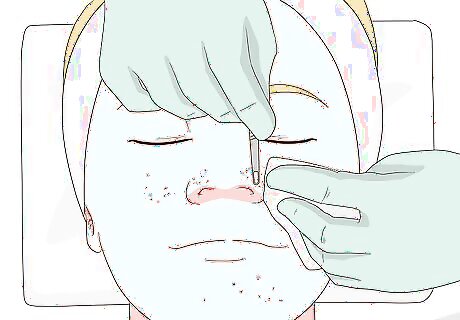
Get an extraction, steam, or Hydrafacial from a professional. Let a professional handle your pores for a healthy, effective unclogging. When you get help from a professional, you have less chance of upsetting sensitive skin, causing breakouts, or leaving acne scars. If you like what treatment does for your pores’ appearance, schedule your appointments no more than once a month. Extraction treatments involve carefully squeezing dirt and oil from your pores. Then, antibacterials will be applied to fight off breakouts and scarring. Steam treatments use warm air to open up your pores. This way, your specialist’s exfoliations and treatments will soak more directly into your skin. Hydrafacials involve using water and pressure to open and clear your pores. After your treatment, pores are likely to look smaller in appearance.
Take prescription medication.

If nothing seems to be working, talk to your doctor about other options. It might be the case that unavoidable factors, like a skin condition, are causing your pores to clog quickly. In that case, seek out extra help through heavier medication. Ask your dermatologist to help you come up with a plan that works best for you. That way, you can finally kick your clogged pores for good!
Keep your hands away from your face.
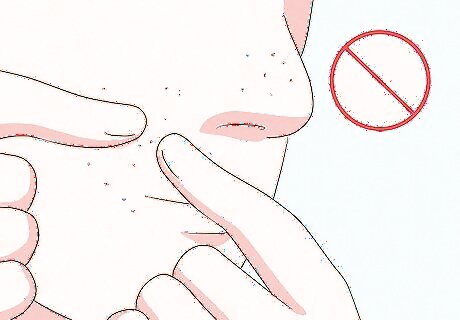
Avoid squeezing your pores to prevent damage to your skin. It may be tempting to just pick, pluck, or squeeze the problem away. But if you do, not only could you cause noticeable acne scars, you could actually cause breakouts, infections, and even larger-looking pores. In short: choose an expert-backed method above—don’t squeeze your pores. If you need to, cover your pores with a bandage to reduce temptation. Busy your hands with a craft, a baking session, or another distraction.
Follow a healthy skincare routine.
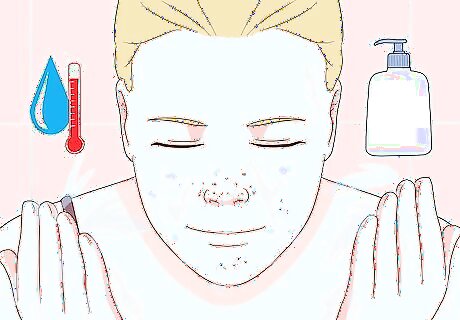
Wash your face with warm water twice per day to prevent clogged pores. Use a facial cleanser to lift dead skin and dirt from your pores so your skin is left looking fresh and clean. If you wear makeup, it’s especially important that you exfoliate and cleanse at the close of each day. Try to use products that make it clear they won’t clog pores. Sometimes this is labeled as, “noncomedogenic.” Keep your hands off of your face to limit dirt and oil buildup. If you’re able, wash your face after working out or sweating heavily.











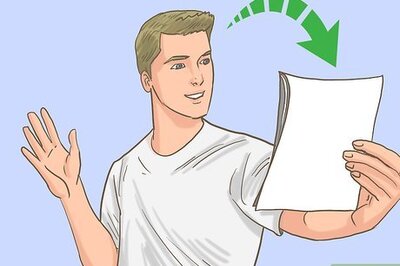





Comments
0 comment